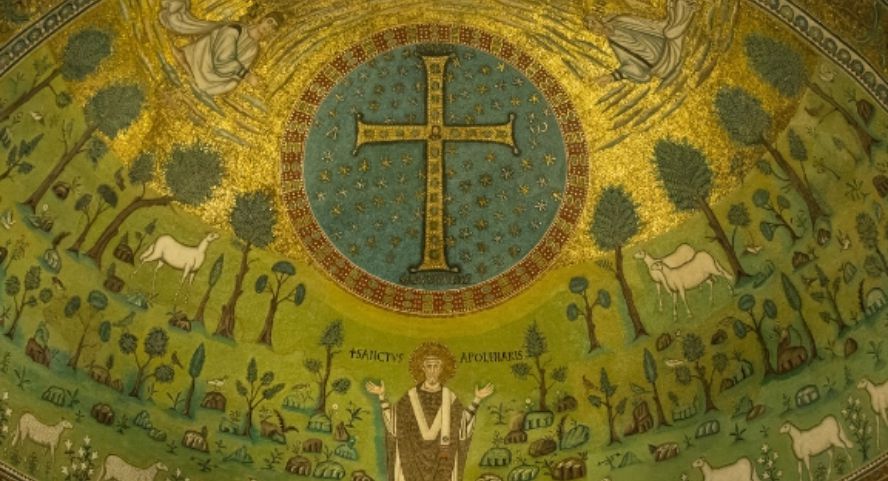Interpretation of the Biblical Description of the Creation of the World in "Ad Autolycum" by Theophilus of Antioch
Leszek Misiarczyk
Cardinal Stefan Wyszyński University in Warsaw , Polandhttps://orcid.org/0000-0002-9511-6174
Abstract
In his analysis of the biblical description of the creation of the world in Genesis 1, Theophilus emphasizes at the starting point that God created everything that exists from nothing through his Logos, excluding as erroneous all theories about the eternal existence of matter. In the perspective of the creation of the world, God gave birth (ἐγέννησεν) to Logos and Wisdom primarily as a beginning (ἀρχή). In the beginning, God creates light that shows things ordered by Him. In the interpretation of individual days of creation, he uses typology, seeing in individual elements of the created world an announcement of future life and resurrection of man and the activities of Christian churches. Therefore, the first three days of creation are the type of the Holy Trinity, the Father, the Son-Logos and the Spirit-Wisdom, i.e. existence without light, and the fourth day is the type of man for whom God created the sun and the moon. Finally, he adds that man's sin has caused animals that were naturally good and gentle to become evil and poisonous, but as man returns to life κατὰ φύσιν, animals will also regain their original gentleness.
Keywords:
Creation, World, Theophilus of Antioch, Ad AutolycumReferences
Eusebius Caesariensis, Historia ecclesiastica, tł. A. Caba, Historia kościelna, Kraków 2013.
Theophilus Antiochenus, Ad Autolycum, ed. M. Marcovich, Theophili Antiocheni Ad Autolycum, Patristische Texte und Studien 44, Berlin – New York 1995.
Teofil z Antiochii, Do Autolika, w: Pierwsi Apologeci greccy, tł. i red. L. Misiarczyk, BOK 24, Kraków 2004, s. 367-486.
Bolgiani F., Sullo scritto perduto contro Ermogene, w: Paradoxos Politeia: studi patristici in onore di G. Lazzati, red. R. Cantalamessa – L.F. Pizzolato, Milano 1979, s. 77-118.
Bourgeois D., La sagesse des Anciens dans le mystère du Verbe. É vangile et philosophie de saint Justin, Paris 1981.
Burtchael J.T., From Synagoge to Church: Public Services and Offices in the Earliest Christian Communities, Cambridge 1992.
Droge A.J., Homer or Moses?, Tübingen 1989.
Engberg J., Conversion, apologetic argumentation and polemic (among friends) in second century Syria. Theophilus’ Ad Autolycum, w: Religious Identities in the Levant from Alexander to Muhammed, red. M. Blömer et al., Turnhout 2015, s. 83-94.
Hadot P., Filozofia jako ćwiczenie duchowe, Warszawa 1992.
Hadot P., Czym jest filozofia starożytna, Warszawa 2018.
Karłowicz D., Sokrates i inni święci, Warszawa 2020.
Karłowicz D., Arcyparadoks śmierci. Męczeństwo jako kategoria filozoficzna – pytanie o dowodową wartość śmierci, Warszawa 2021.
Lampe G.W.H., A Patristic Greek Lexicon, Oxford 1961.
Liddel H.G. – Scott R., A Greek-English Lexicon, Oxford 1994.
Misiarczyk L., Il Midrash nel Dialogo con Trifone di Giustino Martire, Płock 1999.
Misiarczyk L., Teofil z Antiochii, w: Powszechna Encyklopedia Filozofii, t. 9, Lublin 2008, k. 409-410.
Misiarczyk L., Wstęp, w: Pierwsi Apologeci greccy, tł. i red. L. Misiarczyk, BOK 24, Kraków 2004, s. 373-374.
Misiarczyk L., The Missing turning point. Apologetic Roots of the Nicene Creed, „Vox Patrum” 61 (2014) s. 89-101.
Nautin P., Ciel, pneuma et lumière chez Théophile d’Antioche (Notes critiques sur Ad Autol. 2,13), „Vetera Christianorum” 27 (1973) s. 165-171.
Prostmeier F.R., Der Logos im Paradies. Theophilos von Antiochia und der Diskurs über eine zutreffende theologische Sprache, w: Logos der Vernunft – Logos des Glaubens, red. F. R. Prostmeier – H.E. Lona, Berlin – New York 2010, s. 207-228.
Rogers R.M., Theophilus of Antioch, Lanham 2000.
Rordorf W., La Trinité dans les é crits de Justin Martyr , „Augustinianum” 20 (1980) s. 285-297.
Simonetti M., La Sacra Scrittura in Teofilo di Antiochia, w: Epektasis, Mé langes patristiques offerts au Cardinal Jean Danié lou , red. J. Fontaine – C. Kannengiesser, Paris 1972, s. 197-207.
Stepień J., Organizacja pierwotnego Kościoła w Listach św. Pawła, „Studia Theologica Varsaviensia” 2/1-2 (1964) s. 309-404.
Voicu S.J., Teofilo e gli antiocheni posteriori, „Augustinianum” 46 (2006) s. 375-388.
Widok N., Akomodacja terminu „trias” od Teofila z Antiochii do Grzegorza z Nazjanzu, „Roczniki Humanistyczne” 44/3 (1996) s. 185-201.
Zeegers-Vander Vorts N., Les trois cultures de Théophile d’Antioche , w: Les apologètes chrétiens et la culture grecque , red. B. Pouderon – J. Doré, Paris 1998, s. 135-176.
Zeegers-Vander Vords N., La création de l’homme chez Théophile (Gen 1,26), „Vetera Christianorum” 30 (1976) s. 258-267.
Cardinal Stefan Wyszyński University in Warsaw https://orcid.org/0000-0002-9511-6174
License

This work is licensed under a Creative Commons Attribution-NoDerivatives 4.0 International License.
Papers published in Vox Patrum are covered by the Attribution-NoDerivatives 4.0 International (CC BY-ND 4.0) licence. Authors and users can use published works licensed under the CC-BY-ND since 2018. For earlier publications, copyrights are available under fair use rights in accordance with the Act of February 4, 1994 on copyrights and related rights.







